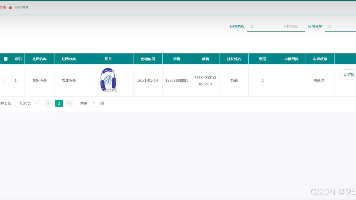aisuite:统一的大模型SDK,简化LLM开发流程
aisuite是一个轻量级的封装层,提供统一的接口,使开发者能够通过简单的字符串(例如openai:gpt-4o或anthropic:claude-3-5)在不同的LLM之间切换,而无需重写大量代码。aisuite作为一个开源的Python库,通过提供统一的接口和灵活的模型切换机制,简化了跨多个LLM提供商的集成过程。对于经常使用不同LLM的开发者来说,可以显著降低开发门槛,提高开发效率,是不容错
随着LLM提供商的不断增加,开发者面临的挑战也在增加:
● API碎片化:每个提供商的API设计和调用方式不同,增加了学习和维护成本。
● 配置复杂性:不同模型的配置参数和格式各异,导致集成工作量大。
● 模型切换困难:在多个模型之间切换需要大量的代码修改和测试。
为了解决这一问题,吴恩达团队推出了aisuite,一个开源的Python库,旨在对流行的LLM提供商进行集成,方便开发者快速接入不同的模型。
AISuite简介
aisuite是一个轻量级的封装层,提供统一的接口,使开发者能够通过简单的provider:model字符串(例如openai:gpt-4o或anthropic:claude-3-5)在不同的LLM之间切换,而无需重写大量代码。
核心特点
● 统一接口:简化了不同LLM之间的调用差异,降低了迁移成本。
● 灵活切换模型:只需修改模型名称即可切换不同提供商的模型。
● 扩展性强:支持多种LLM提供商,如OpenAI、Anthropic、Google、AWS、Azure、Groq、Mistral、HuggingFace和Ollama等。
支持的模型提供商
支持以下11种模型提供商:
● Anthropic
● AWS
● Azure
● Cerebras
● Groq
● HuggingFace Ollama
● Mistral
● OpenAI
● Sambanova
● Watsonx
快速上手
以下是使用aisuite进行多LLM调用的基本步骤:
安装依赖
uv venv
source .venv/bin/activate # Linux/macOS
pip install aisuite[all] openai python-dotenv
配置API密钥
在.env文件中添加各LLM提供商的API密钥:
OPENAI_API_KEY=your_openai_key
ANTHROPIC_API_KEY=your_anthropic_key
编写查询函数
import aisuite as ai
client = ai.Client()
models = ["openai:gpt-4o", "anthropic:claude-3-5-sonnet-20240620"]
messages = [
{"role": "system", "content": "Respond in Pirate English."},
{"role": "user", "content": "Tell me a joke."},
]
for model in models:
response = client.chat.completions.create(
model=model,
messages=messages,
temperature=0.75
)
print(response.choices[0].message.content)
通过上述代码,开发者可以轻松地在不同的LLM模型之间切换,比较它们的输出结果,从而选择最适合特定任务的模型。
工具调用
aisuite为跨支持提供商的工具/函数调用提供了一个简单的抽象层,工具调用抽象使得在不更改代码的情况下,轻松地将工具与不同的大语言模型结合使用。使用aisuite调用工具的方式有两种:
1. 手动工具处理
这是在未指定max_turns时的默认行为,以OpenAI兼容的格式传递工具。
def will_it_rain(location: str, time_of_day: str):
"""Check if it will rain in a location at a given time today.
Args:
location (str): Name of the city
time_of_day (str): Time of the day in HH:MM format.
"""
return "YES"
tools = [{
"type": "function",
"function": {
"name": "will_it_rain",
"description": "Check if it will rain in a location at a given time today",
"parameters": {
"type": "object",
"properties": {
"location": {
"type": "string",
"description": "Name of the city"
},
"time_of_day": {
"type": "string",
"description": "Time of the day in HH:MM format."
}
},
"required": ["location", "time_of_day"]
}
}
}]
response = client.chat.completions.create(
model="openai:gpt-4o",
messages=messages,
tools=tools
)
2. 自动工具执行
当指定了max_turns时,可以将可调用的Python函数列表作为工具参数传递,aisuite将自动处理工具调用流程。
def will_it_rain(location: str, time_of_day: str):
"""Check if it will rain in a location at a given time today.
Args:
location (str): Name of the city
time_of_day (str): Time of the day in HH:MM format.
"""
return "YES"
client = ai.Client()
messages = [{
"role": "user",
"content": "I live in San Francisco. Can you check for weather "
"and plan an outdoor picnic for me at 2pm?"
}]
# Automatic tool execution with max_turns
response = client.chat.completions.create(
model="openai:gpt-4o",
messages=messages,
tools=[will_it_rain],
max_turns=2 # Maximum number of back-and-forth tool calls
)
print(response.choices[0].message.content)
当指定max_turns时,aisuite将:
- 将消息发送给大语言模型
- 执行大语言模型请求的任何工具调用
- 将工具结果发送回大语言模型
- 重复上述步骤,直到对话结束或达到
max_turns
总结
aisuite作为一个开源的Python库,通过提供统一的接口和灵活的模型切换机制,简化了跨多个LLM提供商的集成过程。对于经常使用不同LLM的开发者来说,可以显著降低开发门槛,提高开发效率,是不容错过的选择。
更多推荐
 已为社区贡献14条内容
已为社区贡献14条内容








所有评论(0)